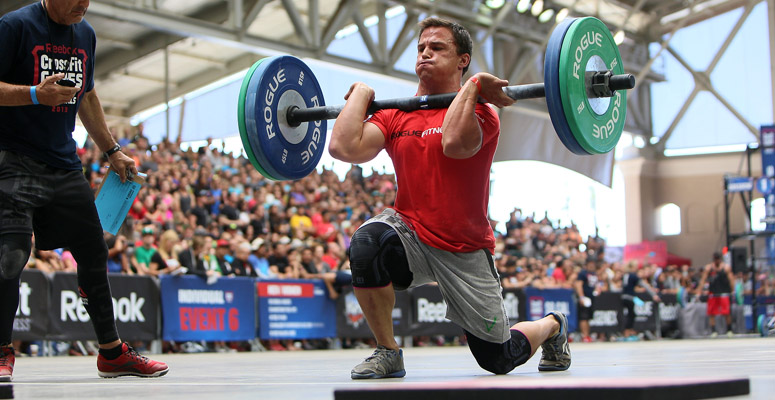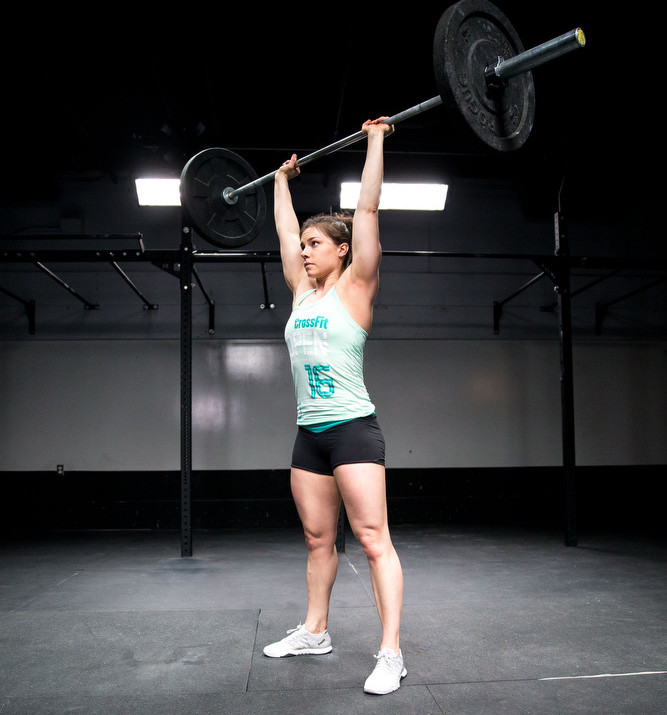
There are not many things that are worse than hearing “no rep” in the middle of a judged WOD. Or after. Just ask Josh Bridges.
The phrase means that whatever movement was just completed was not up to standards, and the athlete has basically wasted time and energy by doing a rep that isn’t quite up to par.
Sure, it makes some of us want to shank our judges, but that’s their job. In fact, there are more than a few notable cases in which a judge didn’t “no rep” an athlete, and it cost the athlete big time.
A big one happened last night, just hours before the 16.5 Open announcement. Bridges had been sitting pretty on top of the leaderboard, with his first-place finish worldwide in 16.4, and dominant finishes in each event prior. However, there was a lot of online controversy as viewers around the globe watched his 16.4 video and noticed there were more than a few reps that looked a bit sketchy.
Yesterday, CrossFit HQ agreed and decided to dock his score by 15 percent, taking his rep total from 330 down to 280 for the workout. As we write this, the leaderboard hasn’t yet been updated to reflect the change, but it’s safe to say this will have an impact on Bridges’ overall Open performance and could even be a decision that keeps him from a Regional qualification this year.
This isn’t the first time this has happened to a well-known Games athlete, nor is it the first time in the 2016 Open that HQ has had to issue a penalty for athletes who completed the workout with movements that were not qualifying reps. In 16.1, a number of athletes were penalized for using small-diameter plates during the burpees over the bar movement, thereby changing the intensity of the exercise and disqualifying their reps.
While some might blame the judges for letting the athletes “get away with” these sub-standard reps, it’s truly the responsibility of each athlete to ensure that they are doing every movement effectively, efficiently, and correctly, and that they are making every rep count.
By taking personal responsibility and following these five tips we can avoid situations like Dan Bailey’s at the 16.2 announcement where both he and his judge believed he finished the workout, but he was in fact one rep short.
5 Tips to Avoid Pulling a Josh Bridges

1. Really Really Understand the Standards
CrossFit loves to do some interesting things with their workouts, and sometimes the standards can have flexibility beyond what meets the eye. A great example was 14.1 where the official movement was a power snatch at 75/55 pounds, but according to the standards the requirement simply required the bar to get from the ground to an overhead locked out position. This gave athletes like myself who maybe didn’t have more than 15 power snatches at 55 pounds an option to clean and jerk the reps. As long as you achieved a full overhead extension, the rep counted.
While that workout had flexibility in the language of the standards, many don’t. It’s up to each individual athlete to understand exactly what is expected of every single rep, and to execute it well each time.
2. Communicate With Your Judge
Your judge can be your best friend or your worst enemy depending on your communication with them leading up to and during the workout. Remember, they are there to help you be accountable for your movements and to execute a workout that will be validated and confirmed as accurate by the powers that be, whether it be CrossFit HQ in the Open or the organizers at a local competition you’re participating in.
Prior to the workout, discuss the movement standards with your judge. Make sure you are completely on the same page with everything required for a rep to count, the rep scheme of the workout, the flow of the workout and anything else that will make it easy to visualize success.
3. Rest if You Need to
We all have the tendency to hear “3,2,1 GO” and want to come out of the gate as hard as we’re able, and then try to maintain that pace through the entire workout. In a workout like 16.5 (a duplicate of 14.5 and literally the worst workout I’ve ever done in my entire CrossFit life), that strategy will get you nowhere fast.
Remember, pacing yourself is important, as is rest if you feel your reps starting to get sloppy. Most athletes will benefit from taking a moment to take a short break, grab a sip of water or a deep breath before trying another rep when your form is starting to go.
If you think about it, the time it takes you to complete one bad thruster where you don’t quite reach depth or don’t quite lock out overhead is the same as what you could spend taking a deep breath, but without the wasted energy of a no-rep.
The key is to take a short break where you refocus, and then get right back into the sufferfest.

4. Keep Your Mind in the Game
If you’re in your zone and suddenly you hear your judge yell “no rep,” it can definitely throw you off. We’ve seen it numerous times with the big athletes in a Games setting – one “no rep” on a muscle up can lead to several in a row making for a frustrated athlete and a judge who feels like the bad guy for just doing their job.
If you do hear the words “no rep” remember, it’s not the end of the world. In fact, it’s an opportunity to fix it immediately and move forward with only one missed rep. If you don’t know why you were corrected, ask immediately to avoid any further wasted energy. Keep your focus forward and on what you can do next to improve, not on what has already happened. You can’t change the no-rep, but you can avoid getting another.
5. When in Doubt, Do Another Rep
CrossFit judges aren’t infallible. I once had a judge tell me I was done with a set of 50 double unders when I knew for a fact I had only done 42. I had needed to take a few singles in the middle of the set, and the judge had just been counting my jumps and hadn’t realized their error.
I won’t lie, it was so SO tempting to skip those last 8 reps. Especially when their frantic waving and telling me I was done made me miss a rep and mess up my rhythm, but it wasn’t honest. I knew when someone reviewed the video, it would have come back to bite me.
As athletes, most of the time we know when we do a clean rep, and we know when we’re pushing the envelope. If you’re competing and you feel like maybe the squat on that last wall ball wasn’t quite deep enough, or perhaps your chest didn’t exactly reach the bar on that pull-up, do another rep. Sure it may cost you a few seconds, or a rep or two in the long run, but wouldn’t you rather lose those seconds now than 15 percent of your overall score at some point in the future?
Sorry Josh Bridges, that must really sting.
What do you guys and gals think about the Josh Bridges score adjustment? How do you avoid no-reps in your workouts?
